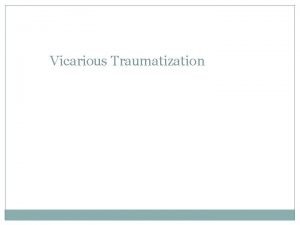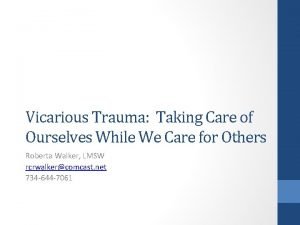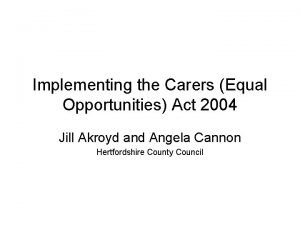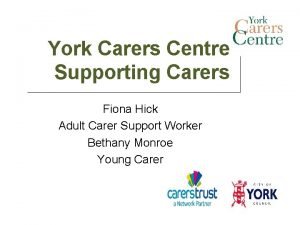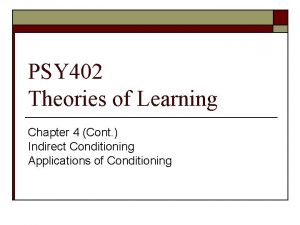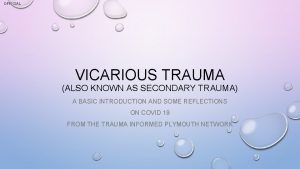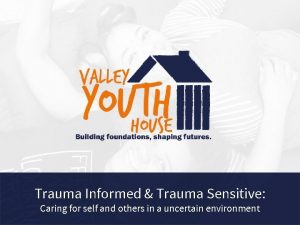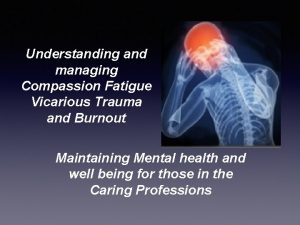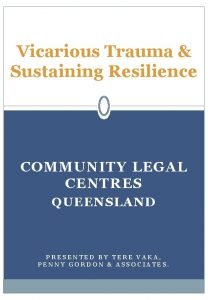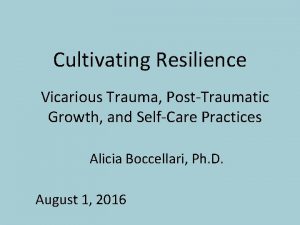Caring for the carers protecting against vicarious trauma

















- Slides: 17

Caring for the carers – protecting against vicarious trauma Nicky Paris Counselling Service Lead St Mary’s Centre

Objectives • What is vicarious trauma? – Common signs – Susceptibility • Organisational perspective • Personal perspective – Exploration of how my work impacts me – Explore what I do to care for myself • What can I do?

What is vicarious trauma? – ‘negative transformation of the self of the helper that come about as a result of empathic engagement with survivors’ trauma material and a sense of responsibility or commitment to help (Mc. Cann & Pearman, 1990, p 132 in Sanderson, 2013) – A process of change resulting from empathic engagement with trauma survivors’ BMA 2015

Common signs? – – – – Lingering feelings of rage/anger about clients Becoming overly involved emotionally Experiencing bystander guilt, shame self-doubt Preoccupied with thoughts of clients outside work Over-identification with clients Loss of hope, pessimism, cynicism Distancing, numbing, detachment Difficulty in maintaining professional boundaries with the client, overextending • Source: BMA, 2015

Susceptibility Individual factors Organisational factors Source: CAADA, 2007 Life situation factors

Organisational Perspective • • • Duty of care to staff and patients Sickness Absence Stress management Working as a team

Personal perspective • How does your work impact you? • Discuss it on your table • Write down three ways in which you are impacted by your work that you would like to share

Personal perspective • How do you deal with these impacts? • Discuss it on your table • Write down three ways in which you cope with your work that you can share with the group

What Can we do? Using meditation or spiritual practice Clearly defined professional boundaries and limits Maintaining physical health and fitness Individual factors Organisational factors Professional supervision or consultative support Life situation factors Availability and use of social support Balanced work/life balance

How can we do it?






Final thoughts • To be affected by what being exposed to others’ traumatic experiences is normal, part of the human experience. • There is growing awareness of vicarious posttraumatic growth – the effect does not have to be negative (Manning-Jones et al, 2015).

References • British Medical Association (2015) http: //www. bma. org. uk/workingfor-change/international-affairs/doctors-against-torture/vicarioustrauma Retrieved January 2015 • CAADA, (2007) CAADA co-ordinated action against domestic abuse CAADA • Manning-Jones, S. , de Terte, I. , & Stephens, C. (2015). Vicarious posttraumatic growth: A systematic literature review. International Journal of Wellbeing, 5(2), 125 -139. doi: 10. 5502/ijw. v 5 i 2. 8 • Sanderson, C. , (2013) Counselling Skills for Working with Trauma. London: Jessica Kingsley
 Secondary traumatization definition
Secondary traumatization definition Vicarious traumatisation
Vicarious traumatisation Robyn bradey
Robyn bradey Dr jean watson
Dr jean watson Nebuliser training
Nebuliser training Equal opportunities act 2004
Equal opportunities act 2004 Fiona hick
Fiona hick Barnet carers
Barnet carers Carers allowance and universal credit
Carers allowance and universal credit Manchester carers forum
Manchester carers forum Provocative in a sentence
Provocative in a sentence Assumptions of social learning theory
Assumptions of social learning theory Yewen v noakes
Yewen v noakes Vicarious reinforcement
Vicarious reinforcement Vicarius filii deis
Vicarius filii deis Vicarious liability means
Vicarious liability means Operant vs classical conditioning
Operant vs classical conditioning Vicarious reinforcement
Vicarious reinforcement
